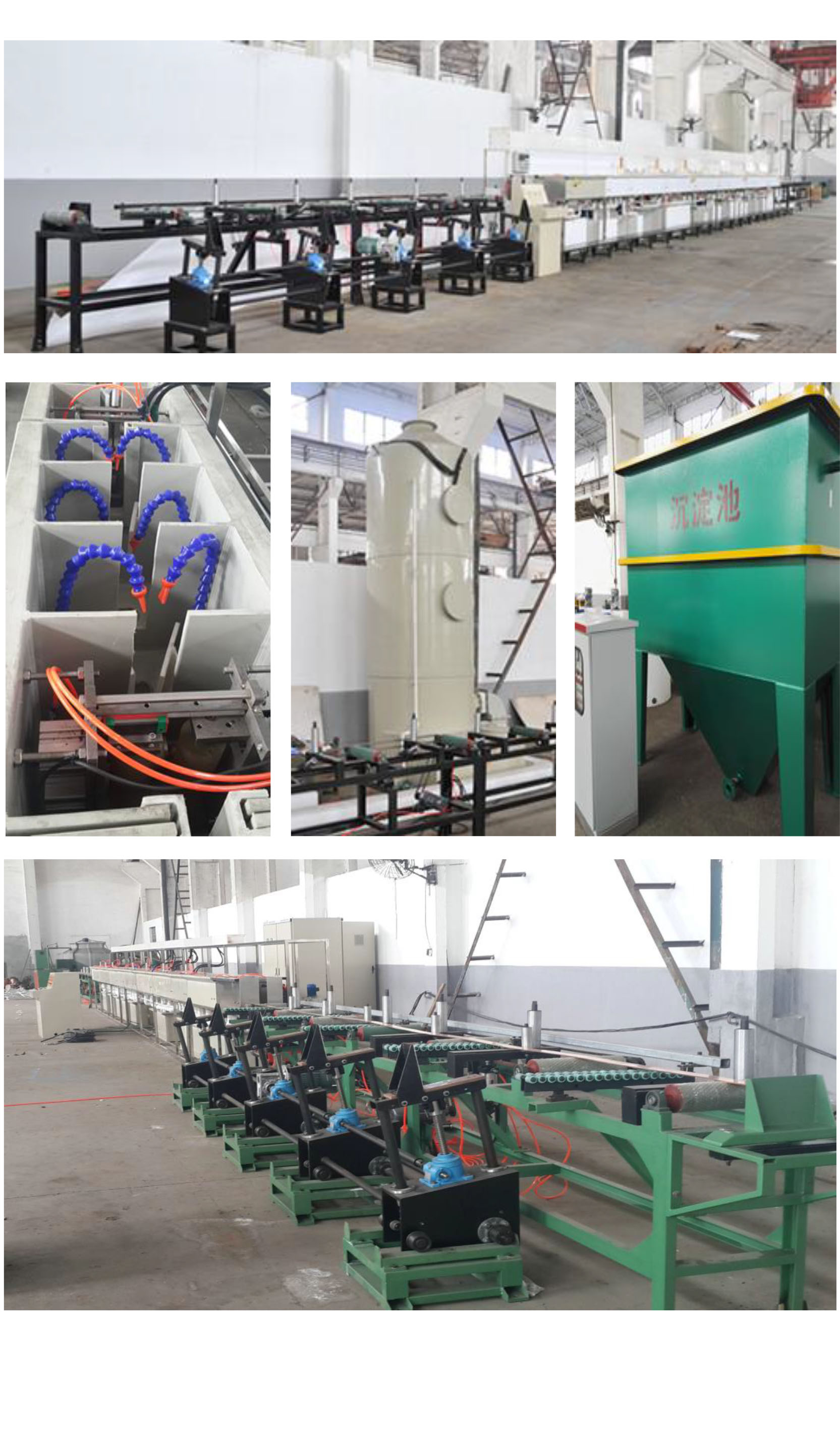
Negocio
 Tiempo de liberación:2019-04-02
Tiempo de liberación:2019-04-02
1. Descripción:
La línea de estañado automático W150 consta de una pieza mecánica y una pieza de revestimiento. Esta línea funciona en estado cerrado: el agua del proceso de limpieza se puede reciclar y el gas residual se puede recoger y tratar. En comparación con el proceso anterior, no se producen aguas residuales ni emisiones de gases residuales. Debido a que el proceso es un movimiento continuo, el revestimiento de la superficie es brillante y uniforme. Mediante el proceso de estañado, se ha aumentado la conductividad y la antioxidación de las láminas de cobre.
2. Parámetro técnico:
|
No |
Item |
QTY |
|
1 |
Tipo |
W150 |
|
2 |
Rango de ancho de barra colectora de cobre |
30-150mm |
|
3 |
Rango de espesor de la barra colectora de cobre |
1- 25 mm |
|
4 |
Velocidad de producción |
1.3-3m /min |
|
5 |
Poder total |
About 50Kw |
3. Lista de suministros
|
No |
Item |
QTY |
Remark |
|
1 |
Rejilla de alimentación de barras |
1 set |
|
|
2 |
Sección de limpieza y aclarado conductivo |
2 pcs |
|
|
3 |
Sección de limpieza antioxidante |
2pcs |
|
|
4 |
Sección de estañado |
3 pcs |
Include water chiller |
|
5 |
Limpieza después del enchapado |
1 pc |
|
|
6 |
Sección de limpieza con agua tibia |
1 pc |
|
|
7 |
Sección de secado por viento caliente |
1 pc |
|
|
8 |
Recoger y volcar la rejilla |
1 set |
|
|
9 |
Sistema de control eléctrico |
1 set |
|
|
10 |
Torre de recogida y limpieza de gases residuales |
1 set |
|
|
11 |
Dispositivo de tratamiento de purificación de aguas residuales |
1 set |
|
4. Description to main components:
4.1 Copper busbar feeding rack:
Put the bright bubar horizontally on the feeding rack; the rack can automatical turn over the busar to vertical stacus and send it to the cleaning channel by feeding rollers.
4.2 Conductive flush cleaning section:
After receiving the signal, the hauling device will clamp the busbar and the conductive wheels will contact the busbar. During this section, the busbar will go through the electrolytic degreasing and oil removing process process.
4.3 Antioxidation cleaning section:
Antioxidation cleaning process is the last cleaning paragraph before the tin plating.
4.4 Tin plating section:
Tin plating section is divided into three parts, which can ensure the busbar get the uniform plating effect and plating thickness.
4.5 Cleaning after plating:
This process is to clean the residual acid at the busbar's surface
4.6 Warm water cleaning section:
This process is for the further cleaning
4.7 Hot wind drying section:
In order to clean the residual water on the busbar surface after cleaning, the hot wind drying is adopted to remove the water.
4.8 Take up and overturn rack:
After the tin plating, the vertical busbars pass the coveying roller rail, then turn to the horizontal status and slip into the stacking device through rubber wheels. In order to avoid the scratch, the sliping distance can be adjusted.
4.9 Electric control system:
The system consists of 1 main control cabinet and 2 consoles. The control system is divided into plating part and mechanical part.
Each section of plating part is equipped with hauling
device, which receive the signal through photoelectric sensor and carry out the
hauling action.
The worker can set the voltage and current in the control cabinet.
4.10 Waste gas collecting and cleaning tower:
After the heating, the acid in the tin plating tanks will generate a small amount of acid mist. In order to reduce the air pollution, the waste gas will be collected and sent to cleaing towen for purification.
4.11 Waste water purify
treatment device:
There is a small
amount of waste water in the cleaning cycle of tin plating production. The
waste water can be neutralized and filtered by purifying device to reach the
standard of reuse water.
5. The
requirements of production line
1. User should prepare a control switch box and power cord used for connect the control switch box to the main control cabinet of the equipment.
2. Water requirement: soft water 2t
3. Auxiliary materials: we provide the list
4. Workshop requirement: 45m*6m*4m (L*W*H)
6. Reference
